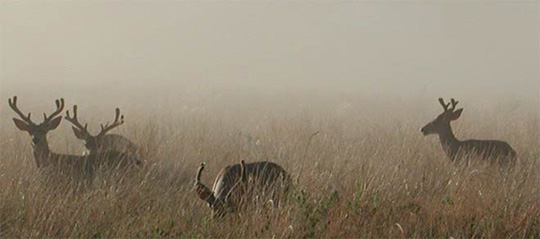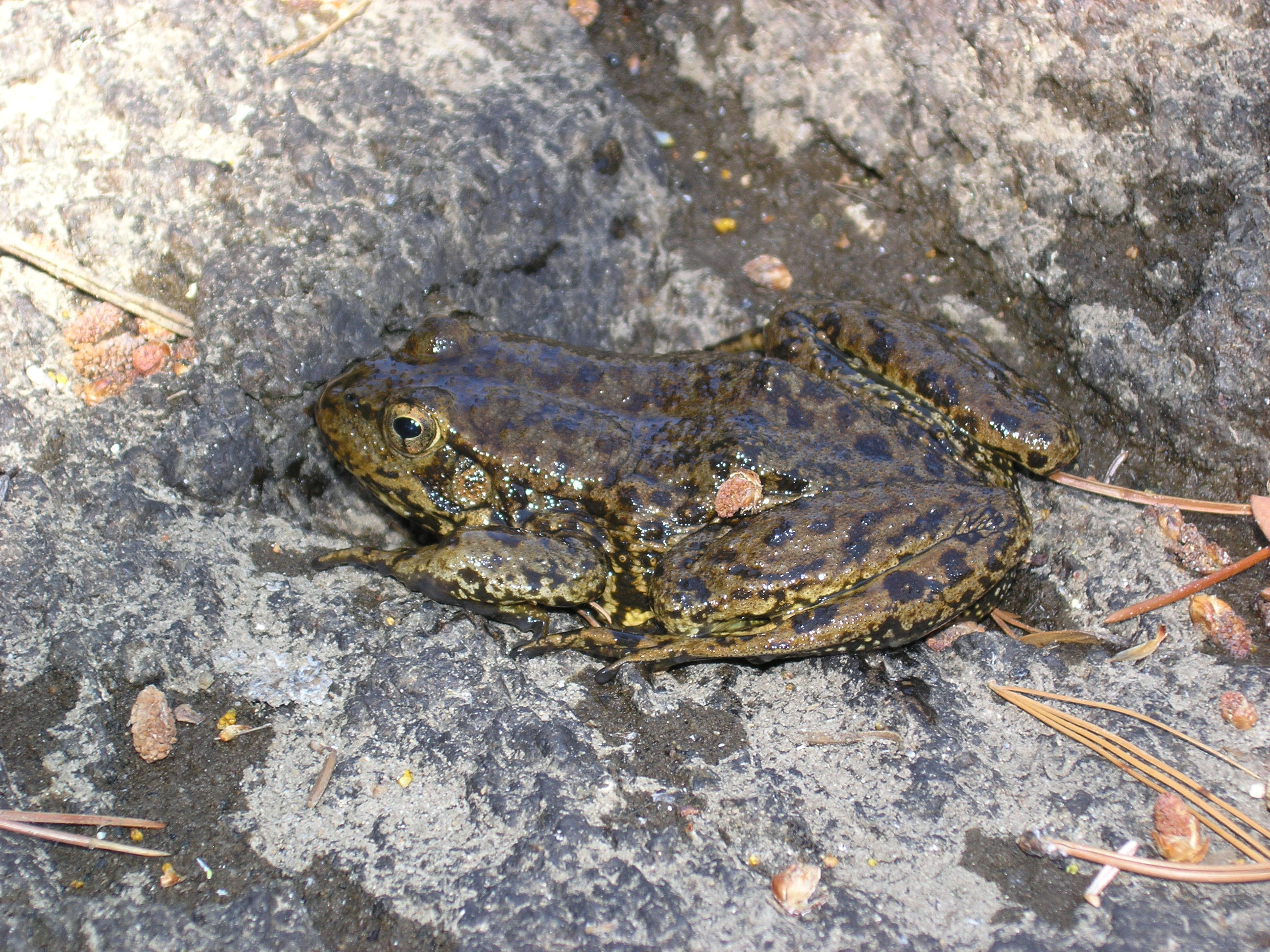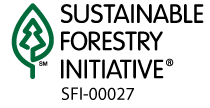xxx,xxx,xxx,xxx
METRIC TONS OF CO2
EQUIVALENT TO
SCRUBBING FROM THE AIR THE ANNUAL
CO2 EMISSIONS FROM xxx.xxx,xxx,xxx VEHICLES
Wildlife

SPI’s commitment to responsible and sustainable land management benefits many wildlife resources using our forests. We conserve these resources by implementing forest practice rules and related policies which include numerous measures addressing aquatic and riparian habitat protections, meadows, snags, hardwoods, wildlife trees, forest stand composition and juxtaposition, soil stabilization, and seasonal conditions. Additional conservation benefits are provided by incorporating our Option A (sustained yield plan), Raptor Policy, and conservation measures included in large-scale forest planning efforts including our fisher CCAA, marbled murrelet SHA, multi-species HCP, salmonid HCP/SHA, and spotted owl HCP.
Over 250 vertebrate wildlife species have been documented in SPI forests including a wide variety of amphibians, reptiles, mammals, birds, and fish. Our management activities ensure SPI lands maintain continuous and sustainable cycles of forests in various seral stages over time, which provide essential elements for meeting our goal to provide habitats in sufficient quantities supporting the diverse assemblage of wildlife resources occurring in our forests.


Our staff and numerous collaborators conduct frequent studies on key indicator species in our forests, including studies focusing on fisher, northern and California spotted owls, great gray owls, and numerous other wildlife species. These studies benefit the overall scientific community and have significantly contributed to understanding these species in managed and dynamic landscapes. Examples include reintroduction of the fisher to SPI’s Stirling District, steady to increasing spotted owl populations, spotted owl habitat use on a managed landscape, identification of bat roost sites, and amphibian distributions throughout our timberlands.
Select wildlife documents and publications prepared by SPI staff and collaborators are available for download:
- 2020 Northern California Private Timberlands Fisher Conservation Summary Report (3.7 MB)
- Exhibits and Attachments to 2020 Northern California Fisher Conservation Summary Report (9 MB)
- Application of Confidence Intervals in Fisher Listing Determination (141 KB)
- Snag Management Objectives for Cavity-Using Species on Sierra Pacific Industries Lands (219 KB)
- Fisher Natal Den Use On Managed Timberland in California (1,034 KB)
- Northern Spotted Owls Near Weaverville and Trinity Lake In Trinity County (4 MB)
- Raptor Policy (95 KB)
- Pacific Fisher Use of a Managed Forest Landscape in Northern California (292 KB)
- Pine Marten Use of a Managed Forest Landscape in Northern California (237 KB)
- Arresting the spread of invasive species in continental systems, barred owls.
- California spotted owl habitat selection in a fire-managed landscape suggests conservation benefits of restoring historical fire regimes.
- California spotted owl occupancy on mixed-ownership lands in the Sierra Nevada of California.
- Density dependence influences competition and hybridization at an invasion front, barred owls.
- DNA metabarcoding reveals the threat of rapidly expanding barred owl populations to native wildlife in western North America.
- Early detection of rapid Barred Owl population growth within the range of the California spotted owl advises the Precautionary Principle.
- Elevational gradients strongly mediate habitat selection patterns in a nocturnal predator, spotted owls.
- Energetics explain predator occurrence and movement in pyrodiverse landscapes, spotted owls.
- Fine-Scale Correlates of Small Mammal Abundance in Industrial Forests if Northern California.
- Forest heterogeneity outweighs movement costs by enhancing hunting success and reproductive output in California spotted owls.
- Forest restoration limits megafires and supports species conservation under climate change, spotted owls.
- Fuels reduction can directly improve spotted owl foraging habitat in the Sierra Nevada.
- Habitat selection by spotted owls after a megafire reflects their adaptation to historical frequent-fire regimes.
- High rates of anticoagulant rodenticide exposure in California Barred Owls.
- Landscape heterogeneity provides co-benefits to predator and prey, woodrats and spotted owls.
- Large trees and forest heterogeneity facilitate prey capture by California spotted owls.
- Megafire causes persistent loss of an old-forest species, spotted owls.
- Megafires, an emerging threat to old-forest species, spotted owls.
- Multi-scale forest heterogeneity promotes occupancy of dusky-footed woodrats in the Sierra Nevada.
- Resource selection by GPS-tagged California spotted owls in mixed-ownership forests.
- Site occupancy and reproductive dynamics of California spotted owls in a mixed-ownership landscape.
- Stable isotopes reveal unexpected relationships between fire history and the diet of spotted owls.
- Trophic interactions mediate the response of predator populations to habitat change, spotted owls.
- Within-patch structures influence small mammal abundance in managed forests of Northern California.



Botany
Situated in the California and Great Basin floristic provinces and North Coast, Klamath, Cascade, Modoc, and Sierra Nevada bioregions, SPI’s California timberlands are among the most botanically diverse in the state. Our lands contain 2,000+ plant species, representing 20-25% of California’s flora, and include approximately 250 special-status plants.
The SPI Botany Program supports all SPIs timberland management and related activities including Timber Harvest Plans, fuels reduction projects, roads, reforestation, and other miscellaneous projects or activities. The Botany Program also performs monitoring and related evaluations to assure the methods and process meet our Botany Policy goals and objectives. Our program serves as an industry leader for timberland management and botanical resource conservation in California. We have significantly expanded available existing information and made numerous scientific contributions supporting botanical resource management in California forest lands. These contributions include scientific papers summarizing research, new species, and noteworthy collections. Other contributions include providing specimens to numerous regional and national Herbaria and providing (through 2024) 6,800+ special-status plant records to the CNDDB maintained by the California Department of Fish and Wildlife. We also maintain a registered Herbarium with 3,200+ specimens, including digital imaging available from the Consortium of California Herbaria.

Select botany documents and publications prepared by SPI staff and collaborators are available for download:
- SPI California Timberlands Botany Policy
- Post-wildfire response of Shasta snow-wreath
- A new species of Allium (Alliaceae) from the southeastern Klamath Mountains, California
- A new species of Phacelia (Hydrophyllaceae) from the southeastern Klamath Mountains, California
- Noteworthy Collections: Scheuchzeria palustris
- Noteworthy Collections: Arnica cernua
- A new species of Lewisia (Montiaceae) from the southeastern Klamath Mountains, California
- Noteworthy Collections: Viburnum ellipticum

